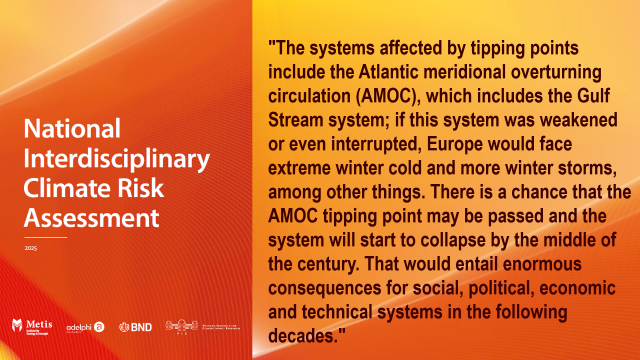Search
Items tagged with: AMOC
The government of Iceland now considers this a national security threat. arctictoday.com/iceland-sees-s…
And the Foreign Intelligence Service of Germany together with other German institutions published a National Climate Risk Assessment this year.
Here is what it says about #AMOC tipping risk.
And the Foreign Intelligence Service of Germany together with other German institutions published a National Climate Risk Assessment this year.
Here is what it says about #AMOC tipping risk.
Iceland sees security risk, existential threat in Atlantic Ocean current's possible collapse - ArcticToday
Iceland has designated the potential collapse of a major Atlantic Ocean current system a national security concern and an existential threat, enabling its government to strategize for worst-case scenarios, the country’s climate minister told Reuters.Reuters (ArcticToday)


